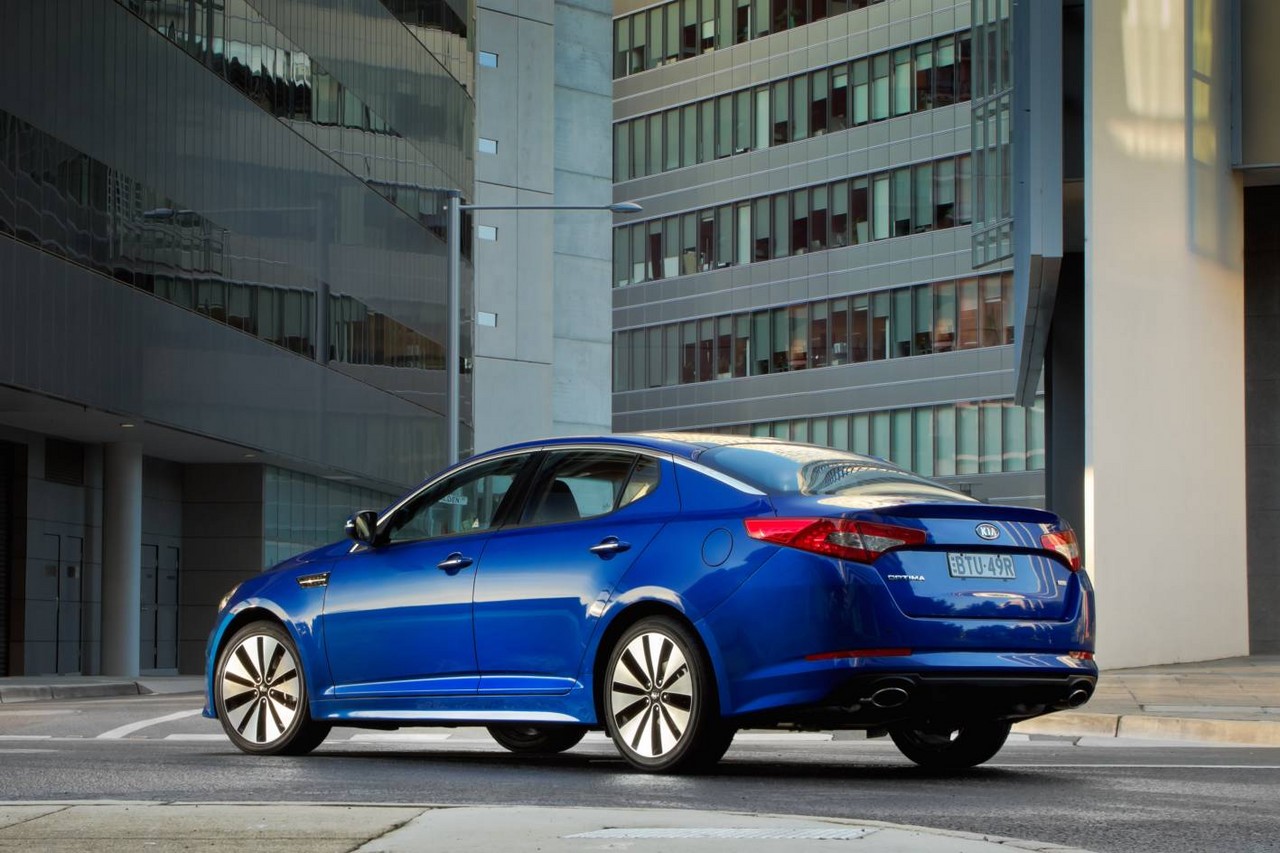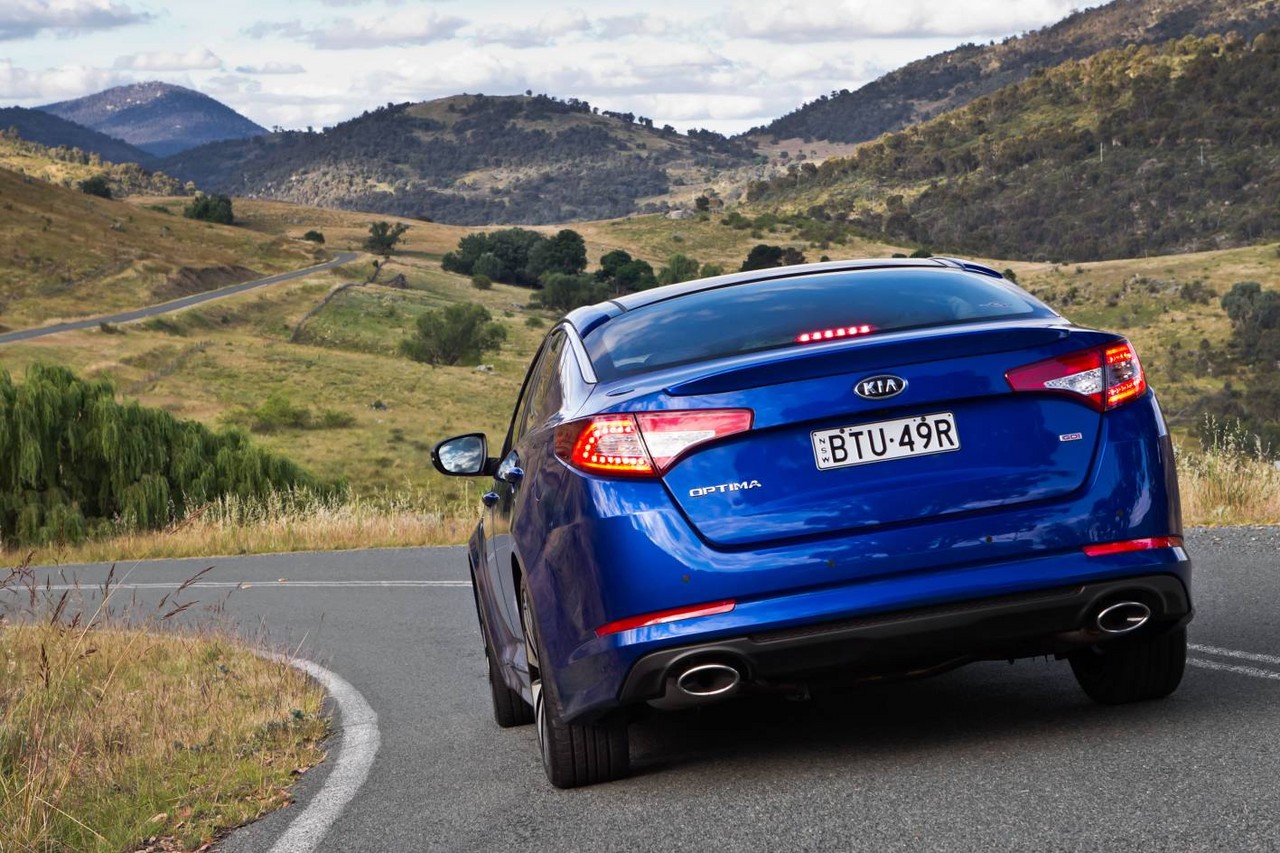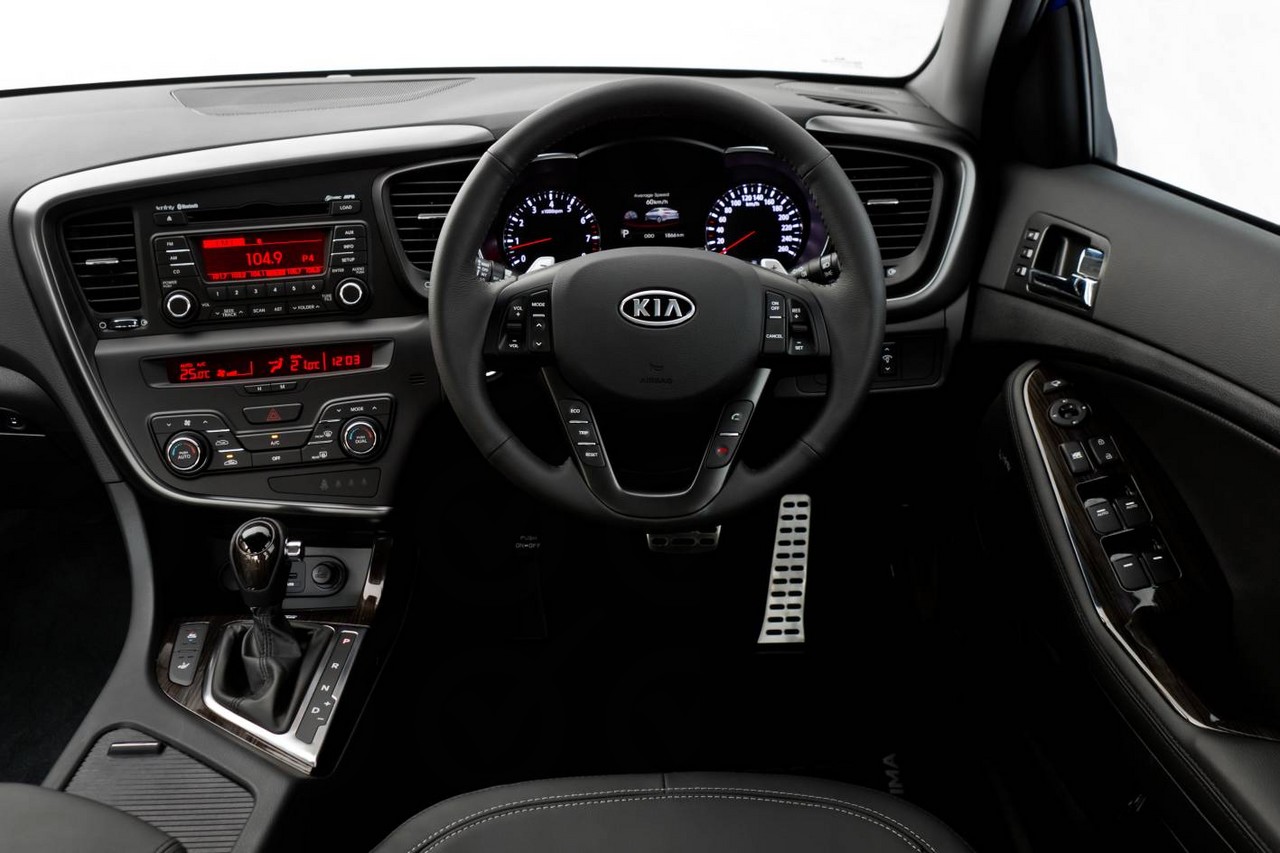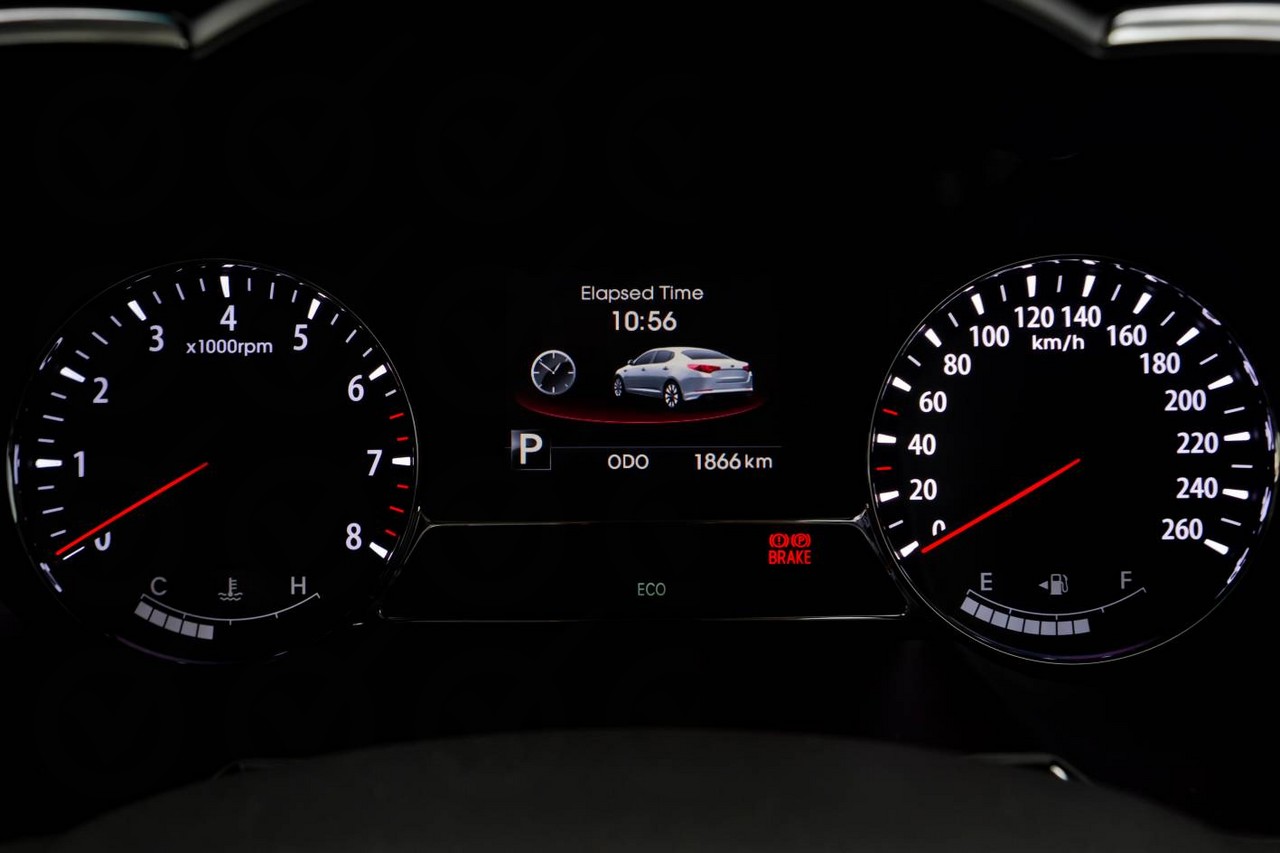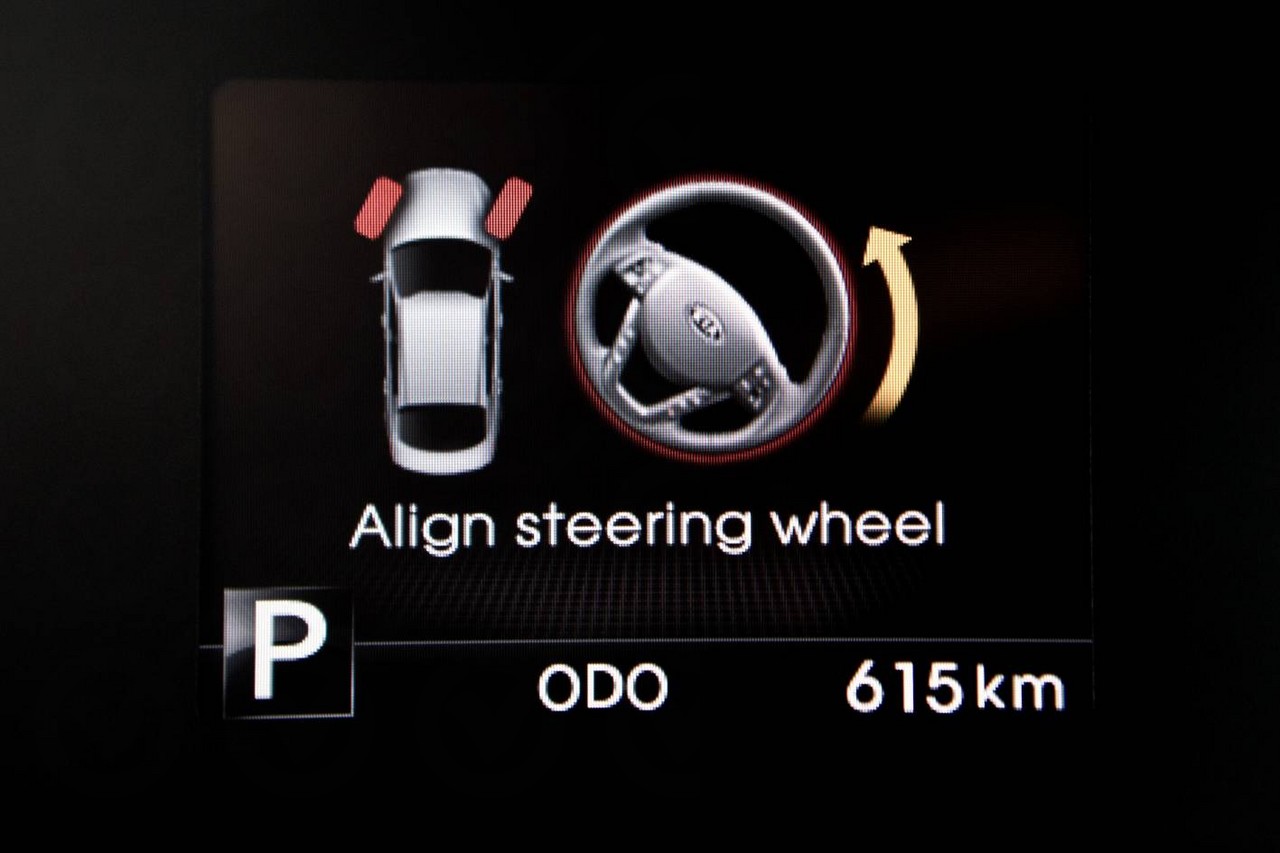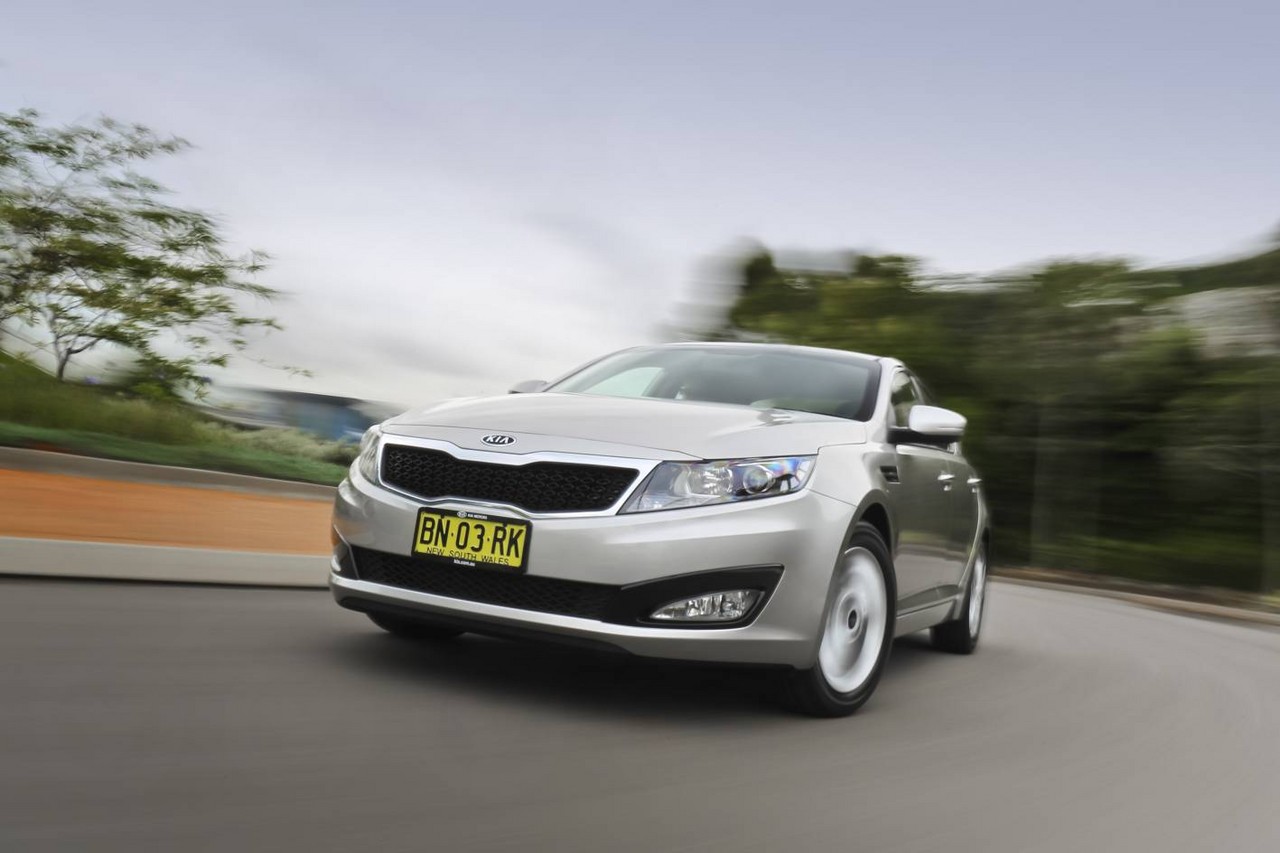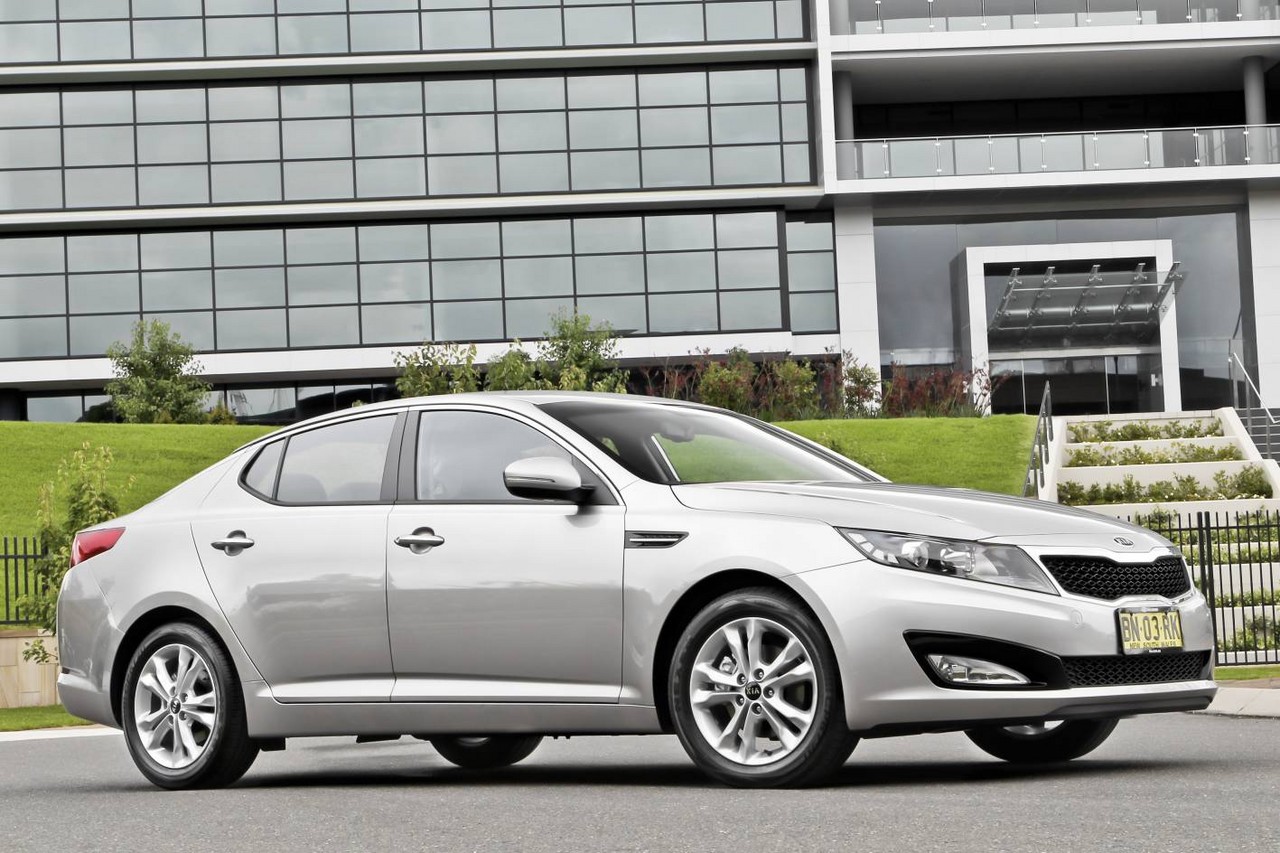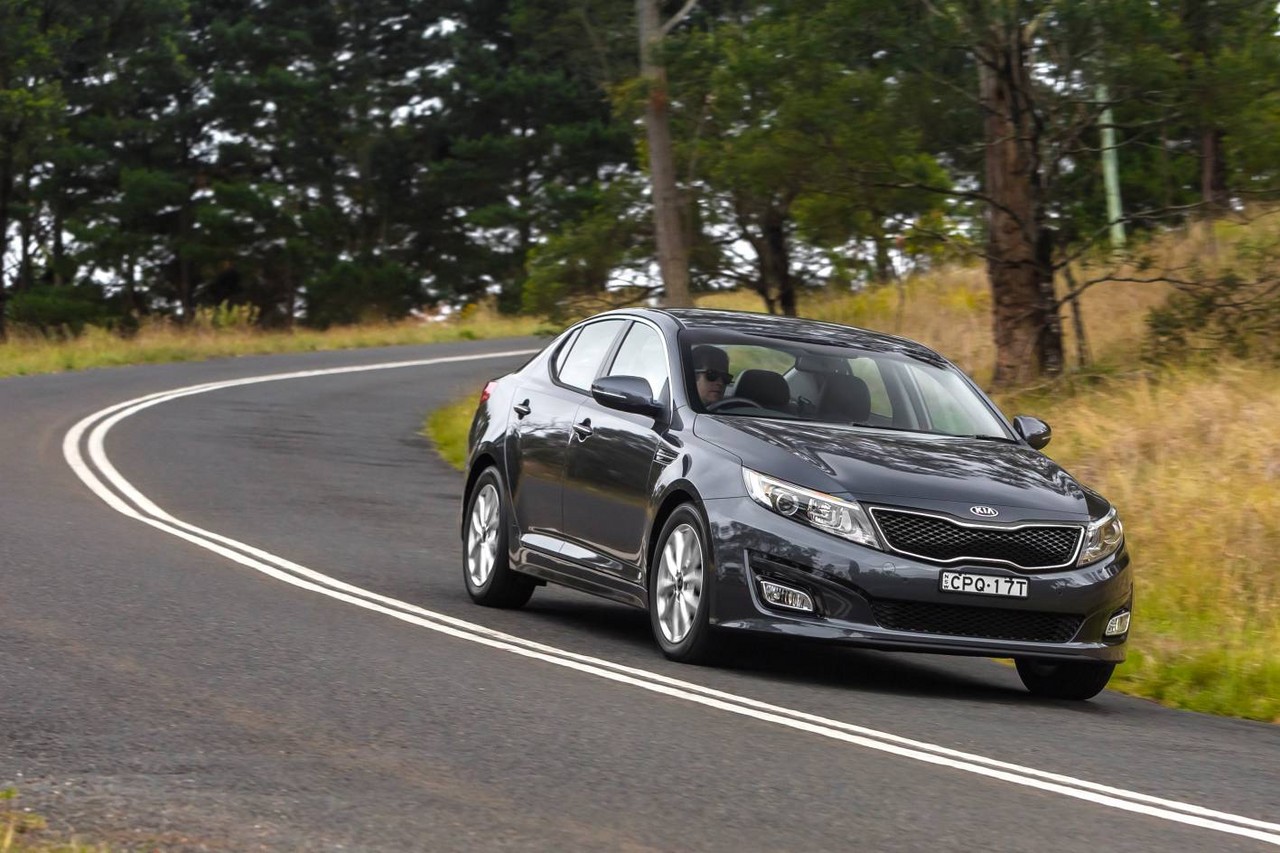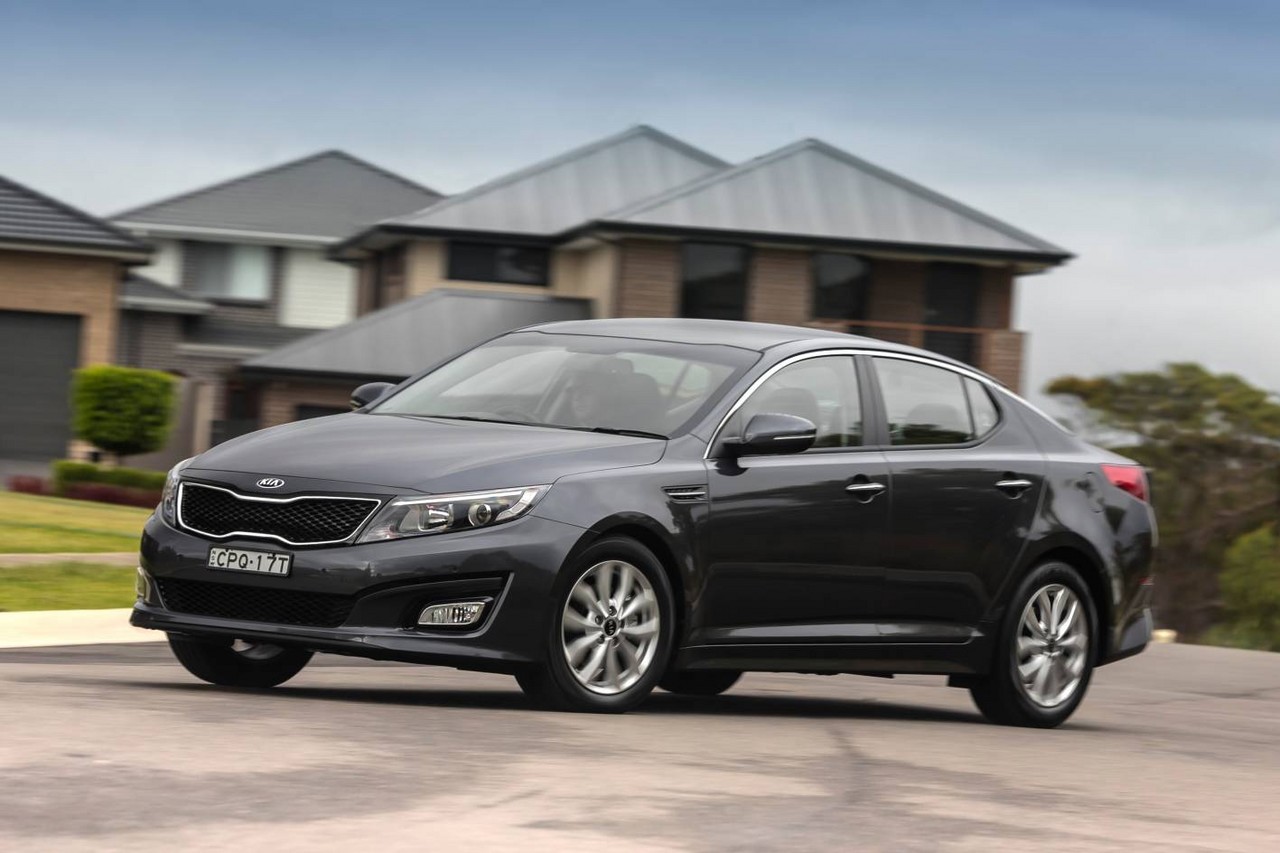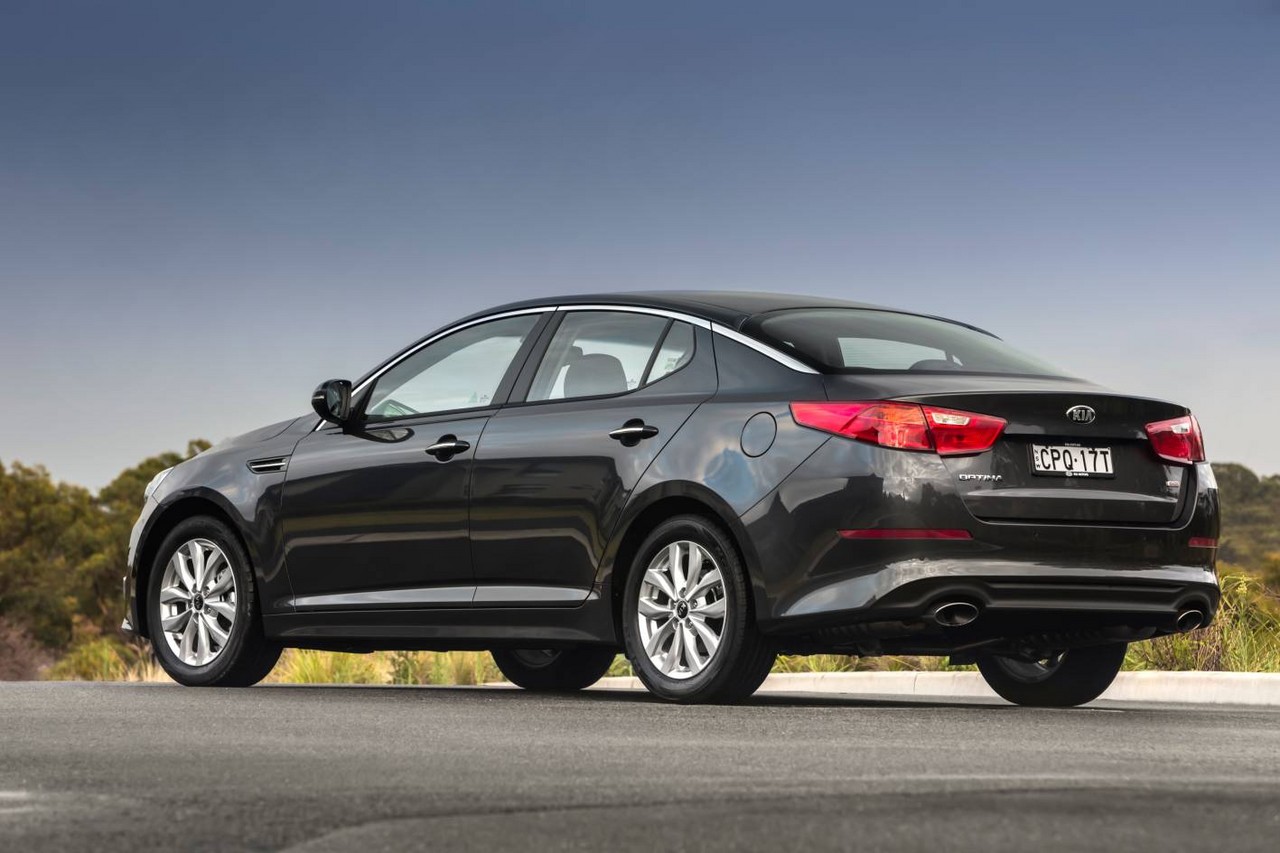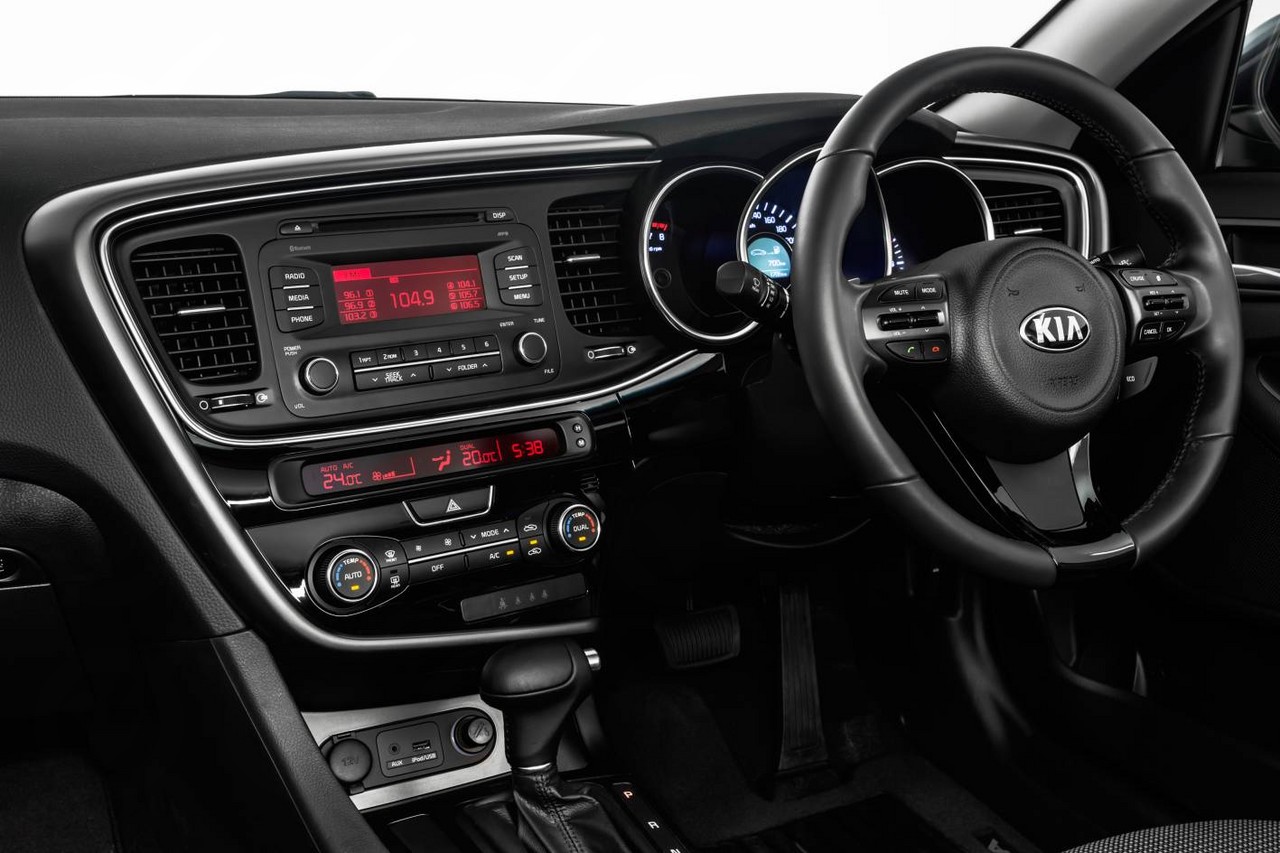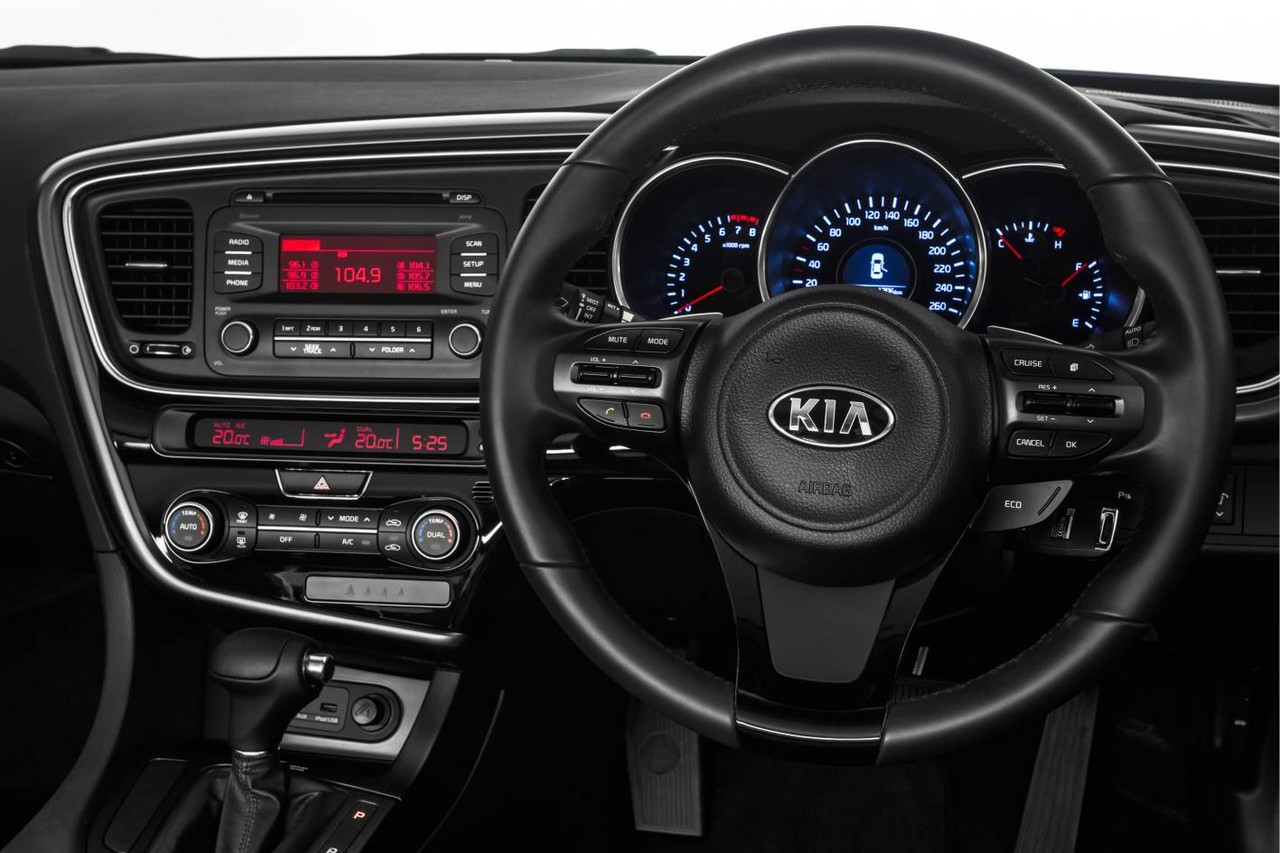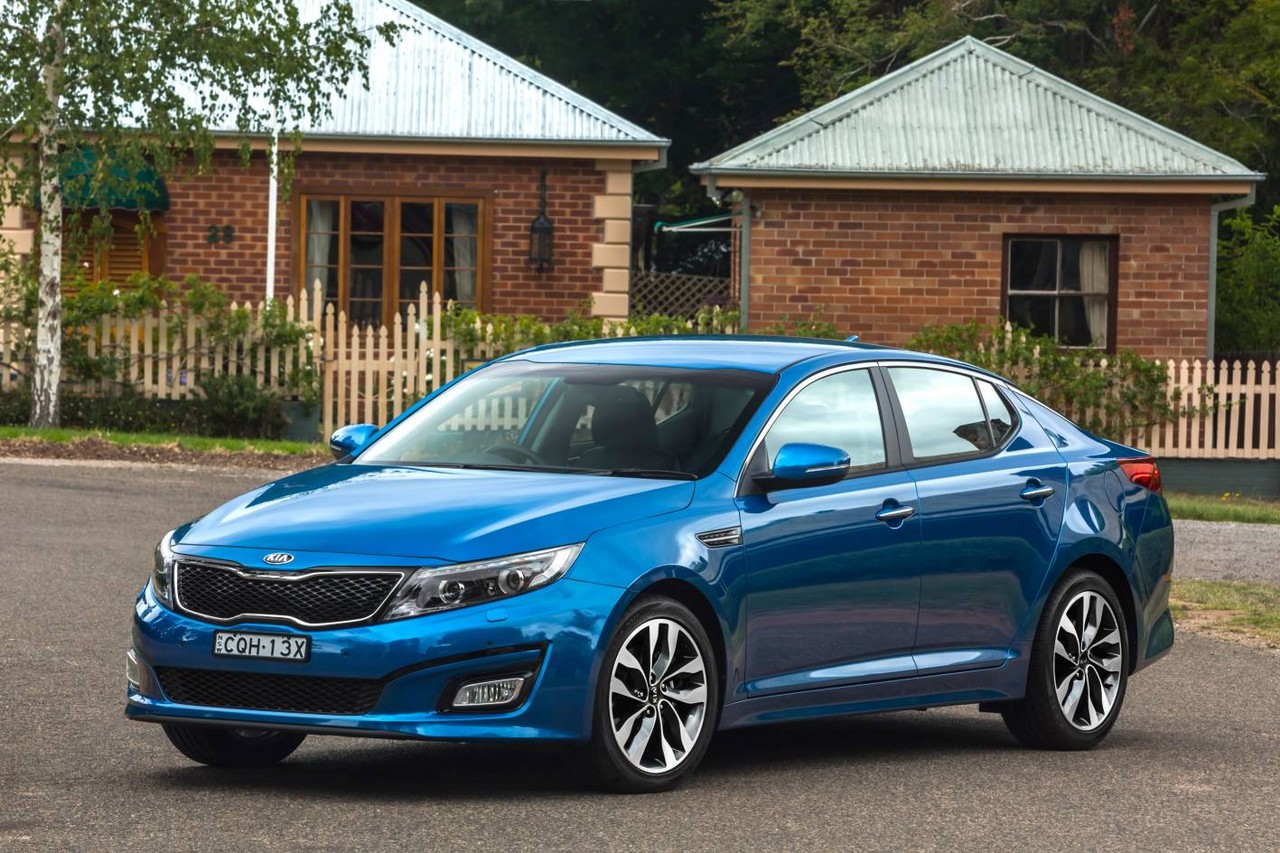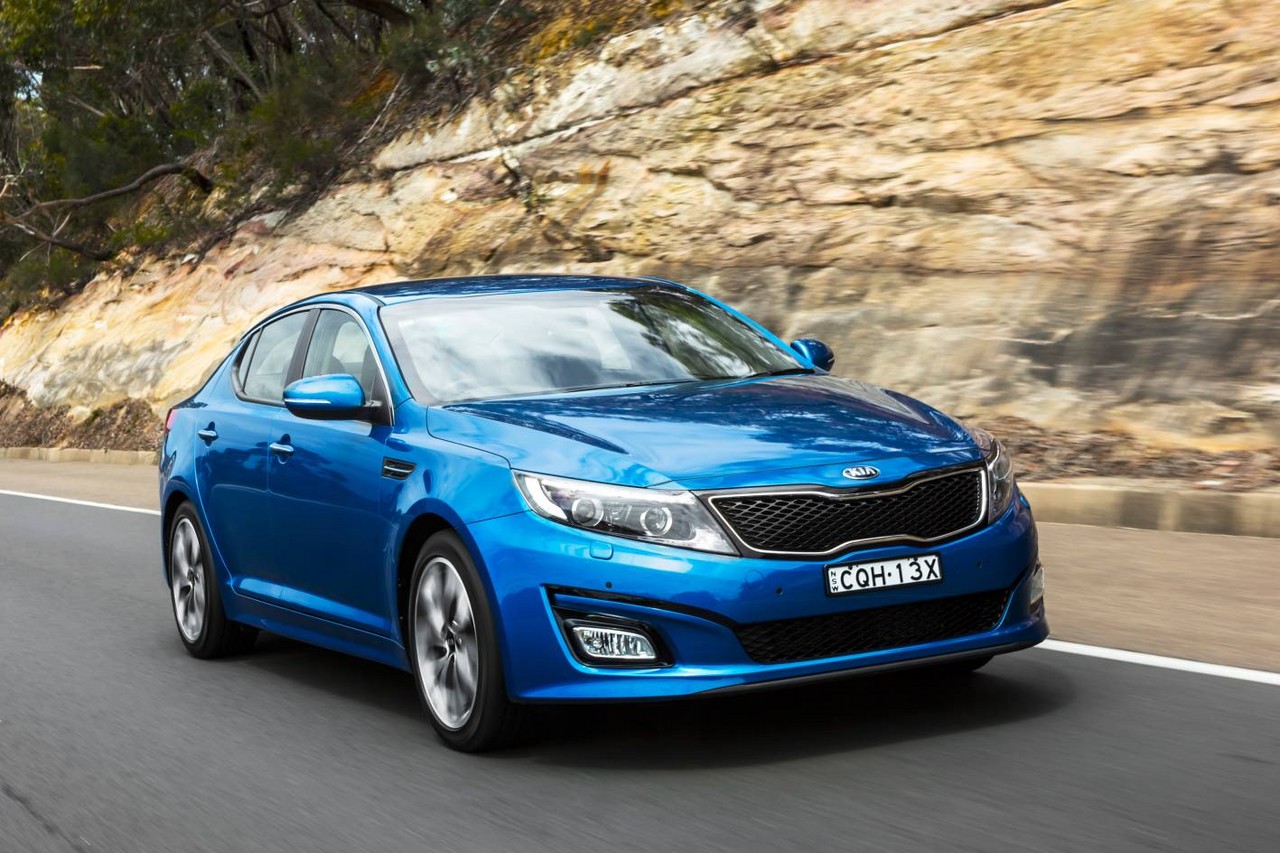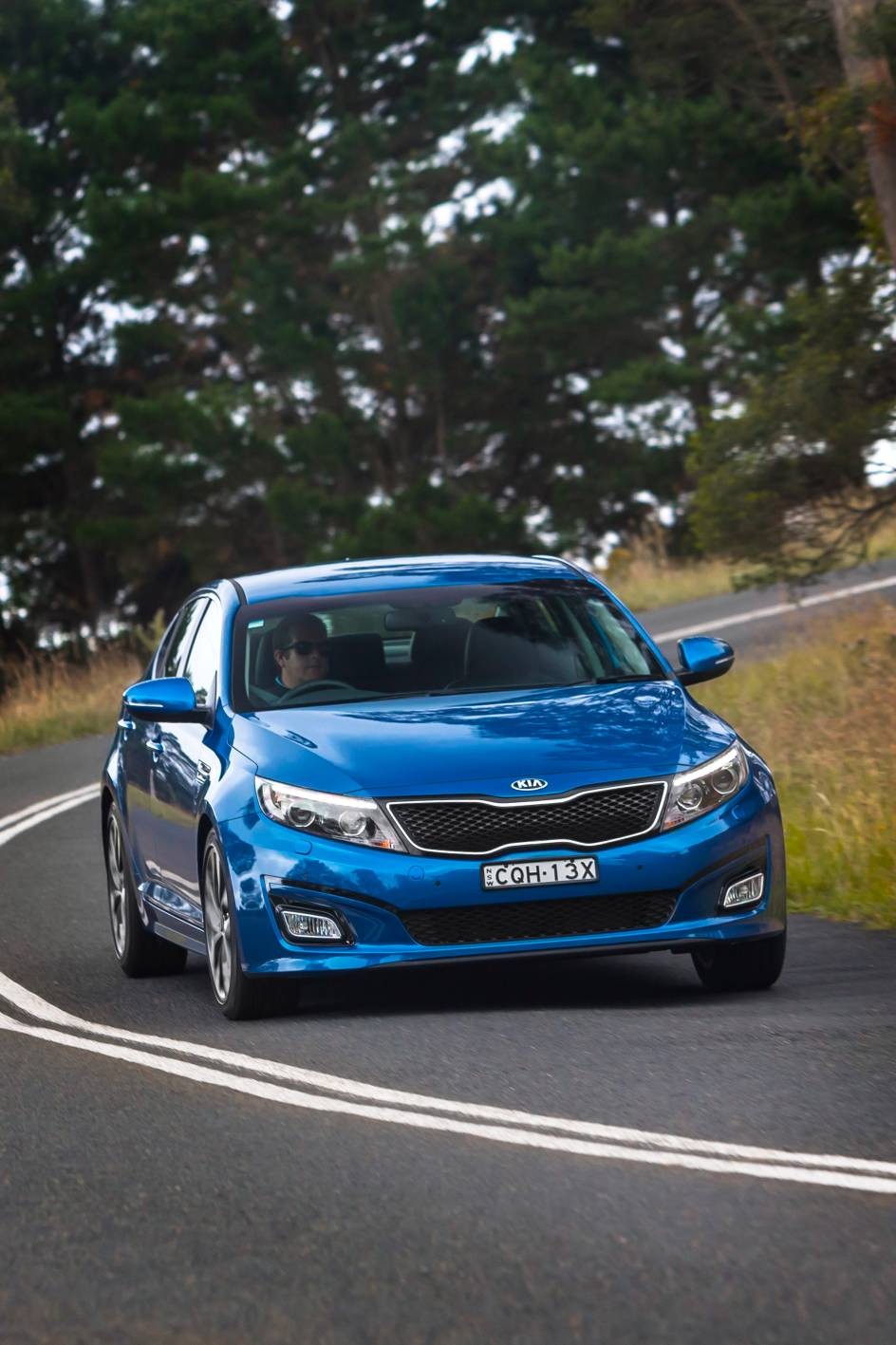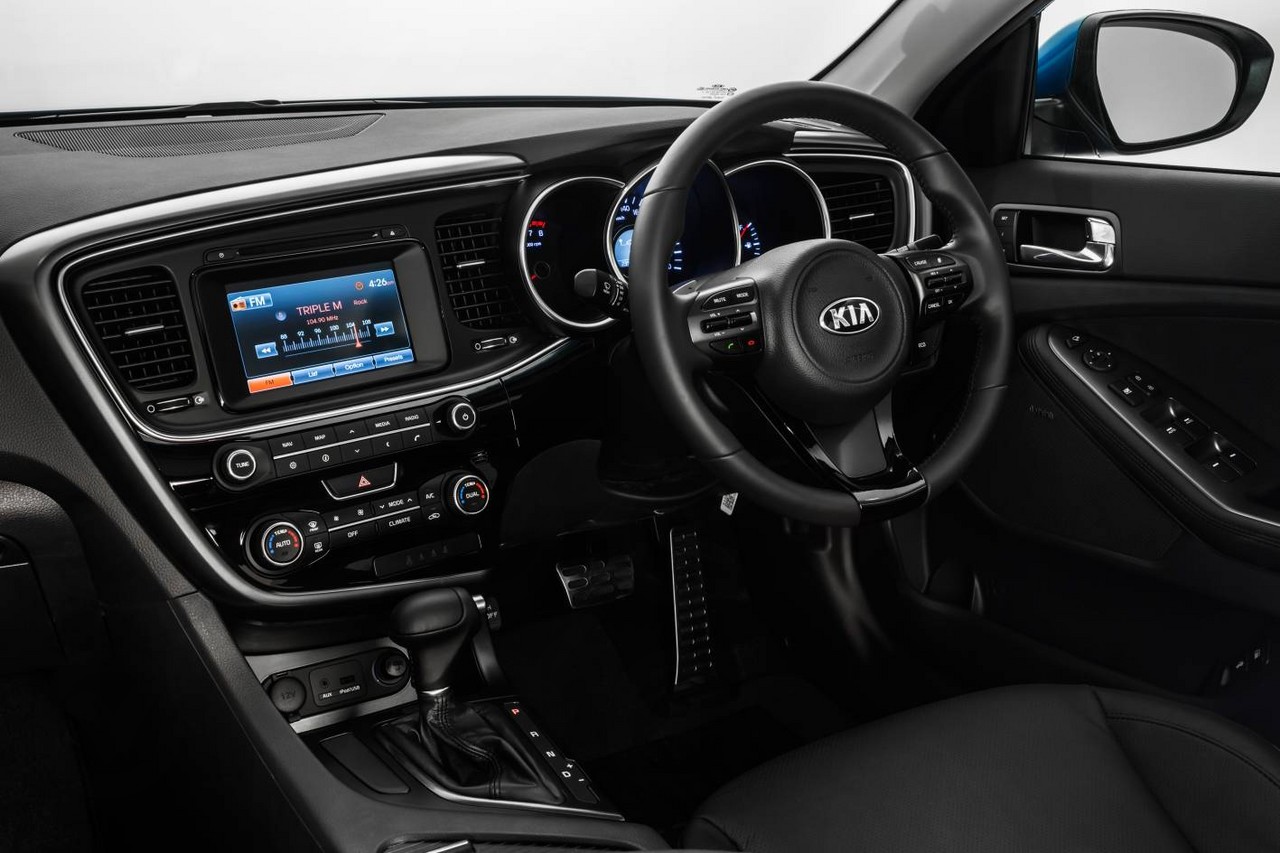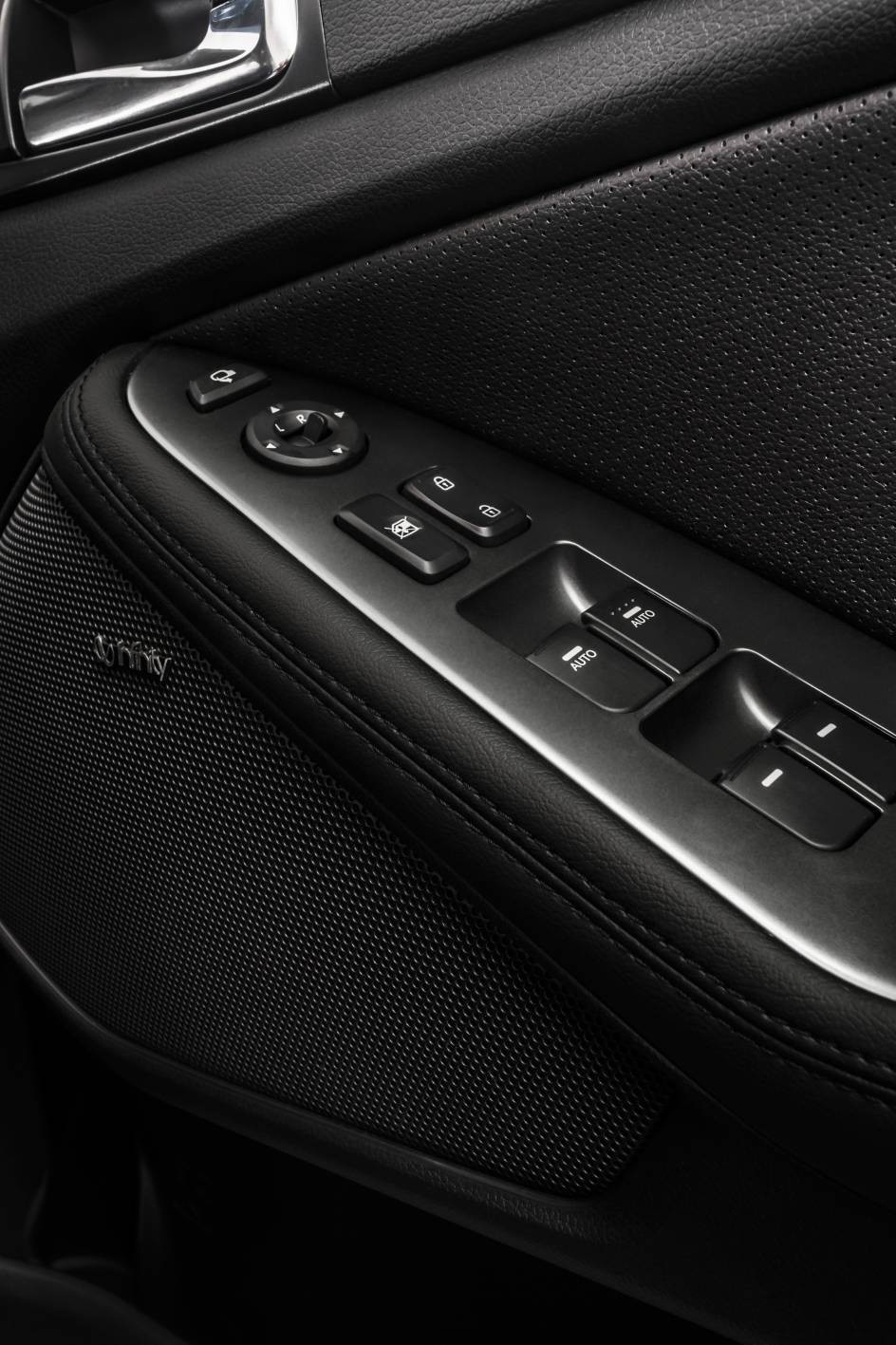
- Flexible 2.4-litre petrol engine
- Competent dynamics
- Spacious interior
- Large boot (though hinges reduce cargo space)
- Overly-assisted steering lacks precision
- Steering wheel kickback over bumps
- Flat seats lack support
- Suspension lacks compliance
- Cabin lacks sound insulation
Review: Kia TF.I Optima (2011-13)
Overview
Released in January 2011, the Kia TF Series I (TF.I) Optima was a mid-size, front-wheel drive sedan. Manufactured in Hwasung, South Korea, the Optima was powered by a 2.4-litre four-cylinder engine that was mated to a six-speed automatic transmission with steering wheel gearshift paddles. The Optima range initially consisted of a Platinum variant, though Si and SLi variants followed in January and December 2012, respectively.
G4KJ engine
The 2.4-litre G4KJ ‘Theta II’ petrol engine had an aluminium block and cylinder head, direct fuel injection, double overhead camshafts, four valves per cylinder, variable intake and exhaust valve timing (D-CVVT), a variable intake system and a compression ratio of 11.3:1.
Dimensions
Compared to its MG Magentis predecessor, the TF Optima was 90 mm longer (at 4845 mm), 25 mm wider (1830 mm), 25 mm lower (1455 mm) and had a 75 mm longer wheelbase (2795 mm).
Suspension
Like the Hyundai YF i45 with which it was co-developed, the TF Optima had MacPherson strut front suspension and independent, multi-link rear suspension.
| Variants | Years | Engine | Trans. | Peak power | Peak torque |
|---|---|---|---|---|---|
| Si, SLi |
2012-13 | 2.4-litre petrol I4 | 6sp auto | 148 kW at 6300 rpm | 250 Nm at 4250 rpm |
| Platinum | 2011-13 |
Safety equipment
Standard safety equipment for the TF.I Optima included dual front airbags, front side airbags, full-length curtain airbags (i.e. for front and rear occupants), ABS, brake assist, electronic brake force distribution, electronic stability control, traction control, active front seat head restraints and front seatbelts with pretensioners and load limiters.
Brakes
The Optima Si had 300 mm ventilated front brake discs and 284 mm solid rear discs. The Optima SLi and Platinum variants, however, had 320 mm ventilated front brake discs.
ANCAP crash testing
In ANCAP crash testing , the Optima received a five star adult occupant protection rating with a score of 35.58 out of 37. In the offset crash test, there was a slight risk of serious chest and leg injury for the driver. In the side impact and pole tests, however, maximum points were awarded.
Features
Standard features for the Optima Si included 17-inch alloy wheels, a six speaker sound system with CD player, MP3 compatibility and auxiliary inputs (3.5mm/USB/iPod), Bluetooth connectivity, dual-zone climate control air conditioning, cruise control, a cooled glovebox, front fog lights, reversing camera, rear parking sensors, 60/40 split and folding rear seats, a leather-wrapped steering wheel, remote central locking, automatic headlights, power windows, power mirrors with heating and folding functions, a tilt and reach adjustable steering wheel, electrochromatic rear view mirror, tinted windows, trip computer, two 12 volt power outlets and an immobiliser.
The Optima SLi was further equipped with 18-inch alloy wheels with 225/45 R18 alloy tyres, a seven speaker Infinity sound system with subwoofer and Bluetooth audio streaming, a satellite navigation system with a seven-inch touchscreen and SUNA live traffic updates, an eight-way power adjustable driver’s seat with memory settings, xenon headlights with washers, daytime LED running lights, static cornering lights, rear fog lights and LED tail-lights.
The Optima Platinum was not initially fitted with satellite navigation and Bluetooth audio streaming as these features were only introduced in March 2012. Compared to the SLi, however, the Platinum was further equipped with leather seats, ventilated and heated front seats, a four-way power adjustable front passenger seat, rain-sensing wipers, a proximity key and panoramic sunroof.
Brochures
Related links
Review: Kia TF.II Optima (2013-15)
Overview
Released in September 2013, the TF Series II (TF.II) Optima range initially consisted of Si variants, with the SLi and Platinum variants following in January 2014. Visually, the TF.II Optima could be identified by its revised headlights, front and rear bumpers, a rear diffuser, tail-lights (with LEDs for SLi and Platinum variants) and alloy wheel designs.
Inside, the TF.II Optima had an updated centre stack, satin finish interior trim (previously chrome), a new steering wheel and more supportive seats with larger side bolsters and additional under-thigh support.
Greater refinement was also achieved through the use of additional dashboard sealant, bulked continuous filament (BCF) for the rear-wheel guards and a rear cross member dynamic damper; the SLi and Platinum variants were also fitted with stiffer 18-inch alloy wheels.
| Variants | Engine | Trans. | Peak power | Peak torque |
|---|---|---|---|---|
| Si, SLi, Platinum |
2.4-litre petrol I4 | 6sp auto | 148 kW at 6300 rpm | 250 Nm at 4250 rpm |
Safety equipment
Compared to its TF.I predecessor, standard safety equipment for Platinum variants was extended to include blind spot monitoring and a rear cross traffic alert system.
Features
Standard features for the TF.II Optima were extended to include front parking sensors, while SLi variants gained leather upholstery. Finally, Platinum variants were fitted with LED fog lights.
Brochure
Related links
- Specifications: Kia TF.II Optima (January 2014)
- Kia News: Optima Boosts Style and Technology (January 2014)
- Specifications: Kia TF.II Optima (September 2014)
- Kia Motors Australia: Kia Optima
- Wikipedia.org: Kia TF Optima

